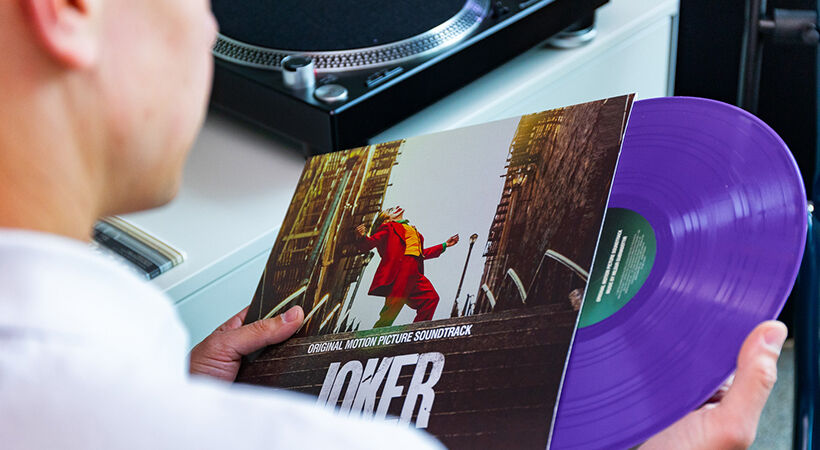Lucy Han, business line leader, building automation within ABB Smart Buildings, explores how invisible automation is unlocking creativity at scale, with a striking example from music technology innovator Polyend.
When you’re a manufacturer of niche musical instruments for artists around the world, innovation isn’t optional, it’s essential. For Polish company Polyend, that innovation doesn’t just come from its products, but from the unique space where those products are imagined, designed, and built.
Step into the office of Polyend’s CEO and you’ll see three guitars, a turntable, vintage electronic consoles from the 1990s, and a classic keyboard synthesizer propped against the wall – everyday sources of inspiration. But perhaps the most meaningful item is a soundtrack album from the film Joker. The Oscar-winning score by Hildur Guðnadóttir was composed using Polyend’s own drum machine.
“This album reminds me I made the right choices when I was still a child,” says Piotr Raczyński, founder and CEO of Polyend. Today, his vision is celebrated by artists including Trent Reznor, Radiohead’s Jonny Greenwood, and Riverside’s Michał Łapaj.
For Raczyński, one of the keys to innovation is space – an environment that sparks creativity and makes people want to be there every day. That’s where ABB comes in, providing smart building technology that works quietly in the background, supporting designers, programmers, and engineers without ever distracting from their craft.
A headquarters built for creativity
This year, Polyend moved into a new headquarters: a low, striking building by Lake Ukiel in Olsztyn. Calm and understated by day, it comes alive at night. The façade itself mirrors one of Polyend’s flagship products, the step sequencer. Made up of 352 windows – each with its own DMX-controlled lamp – the building lights up in a rhythm, echoing the beat of music itself.
Inside, the building is just as thoughtfully designed. The glass-covered patio is filled with ferns and rock gardens, perfect for a quick call or creative reset. The roof is planted with sedum for natural insulation. And throughout the facility, smart automation means employees can move seamlessly without ever needing to flip a switch.
Lighting is soft and adaptive, diffused through special lenses where technicians assemble delicate components. Motion sensors track occupancy while maintaining consistent, comfortable temperatures. In meeting rooms, ABB Tenton® control sensors monitor humidity and CO₂. When thresholds are exceeded, the system automatically adjusts heating, ventilation & air conditioning (HVAC) airflow. “It definitely improves the comfort of teamwork,” Raczyński smiles.
Just a year ago, Polyend’s operations were scattered across three locations, with the main office squeezed into a city apartment. When designing the new space, the priority wasn’t prestige – it was atmosphere. “We didn’t want a showpiece building. From the start, it was about how our people would feel inside. Automation should create comfort and atmosphere without drawing attention. A musician doesn’t need to know how a sound is generated. And we don’t need to think about why it feels so pleasant here. Let’s focus on passion,” Raczyński explains.
Technology that works in the background
“It’s an ambitious project. On one hand, it’s complex – integrating automation with ventilation, a heat pump, and the alarm system. On the other, it embraces a minimalist approach. We used multifunctional solutions, which meant fewer devices overall,” says Paweł Piórkowski of AB Instalacje, the company responsible for electrical design, installation, and programming.
Discreet touch panels allow manual adjustments, blending harmoniously with the interior and even echoing the look of Polyend’s instruments. The real powerhouse, though, is hidden away in a small room few visitors will ever see: the ABB i-bus® KNX system. It controls heating, lighting, and air conditioning, adapting conditions automatically. When a meeting ends, the conference room is ventilated. When the last employee leaves production, the system lowers the temperature, turns off the air conditioning, and powers down the lights.
Everything happens quietly, efficiently, and invisibly, leaving the spotlight exactly where it belongs: on the music.
For the next phase of the project, Polyend is implementing ABB’s InSite energy management system to connect with its solar installation. “The system will optimize the building’s energy efficiency, combining team comfort with measurable cost savings,” says Mateusz Maląg, sales manager at ABB Electrification Poland.
For Piotr Raczyński, the goal is clear: use technology at a scale that always supports, but never interferes. “Finding that balance is difficult,” he admits, “but when you do, the results can be extraordinary.”





